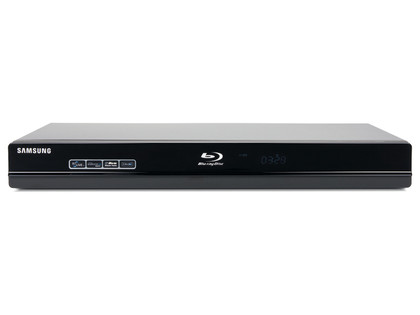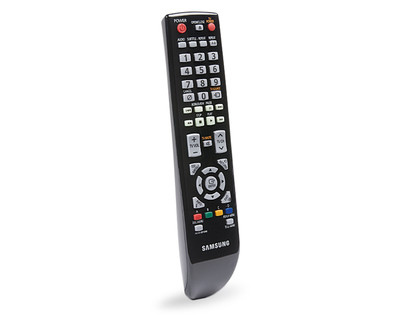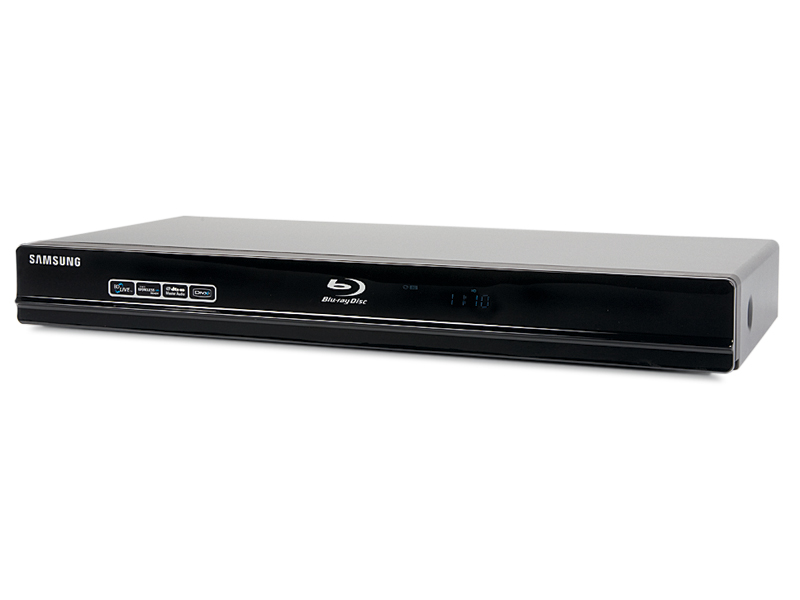TechRadar Verdict
Fully-featured Blu-ray deck with good value pictures, but let down by tricky and impractical BD Live setup
Pros
- +
Fast loading times
- +
BD Live
- +
Good value
- +
Decent pictures
Cons
- -
Odd design
- -
Tricky BD Live setup process
- -
Can't stream digital media
Why you can trust TechRadar
Samsung's latest budget Blu-ray deck is something of an oddity. Its claims to be compatible with digital media and the BD Live service (the latter even wirelessly) might lead you to believe that the BD-P1600 is punching above its price tag.
Features
On paper this is a fabulously well-specified deck. Best of all, it's far smaller than most Blu-ray players, though the build quality is rudimentary; a flap on its front hides some touch-sensitive controls and a USB slot as well as the disc tray itself, but the finish is functional, rather than classy.
With Profile 2.0 status, the deck can access BD Live, while that USB slot can accept memory sticks containing music, photos and some video files. Slightly disappointing is the absence of Samsung's Internet@TV feature – an equivalent of which is found on Panasonic's slightly more expensive lineup of Blu-ray players.
On the audio side, the BD-P1600 does play both the new lossless sound formats, Dolby TrueHD and DTS HD Master Audio, as well as Dolby Digital Plus.
Ease of use
Our first gripe is with BD Live, because even though the BD-P1600 is strapped with both wired and wireless functions for the service, neither are perfect. The player only has 256MB of onboard storage, so any extras you download will realistically have to go on a separate USB memory stick that's attached to the unit's front USB slot.

THE USUAL SUSPECTS: All the ports on the back panel are what you'd expect to see
Indeed, for BD Live to work at all, a dongle with a minimum of 1GB has to be inserted, and that looks ugly. The rear's ethernet cable, once hooked-up to a broadband router, doesn't give the easy access to BD Live that it should either. After a fruitless few hours with the set-up menus, which frequently froze and necessitated a re-boot, we decided to rely on the wi-fi dongle Samsung sent us.
It's a revelation. Shoved into the rear USB input, it requires only the WEP key of your wireless router to work. Minutes later it's a cinch to access the BD Live service from our test disc, Transformers, and within seconds we've downloaded some rather odd onscreen features to accompany the movie, such as a GPS Tracker and Robot Status Alerts.

BD LIVE: Although this player is Profile 2.0 compatible, we are yet to see BD Live content really take off
These files are so small, that we can't explain why they are not already on the Blu-ray disc itself. This is not Samsung's fault, but it's looking increasingly as if BD Live compatibility is just not a good enough reason to choose between Blu-ray players.
If you're happy transferring digital media from your PC to blank discs or a USB stick, the BD-P1600 quite happily plays AVI, DiVX and MPEG video (as well as MP3 and JPEG photos). Elsewhere the user interface on the BD-P1600 is rudimentary, but effective.
Perhaps this deck's biggest advantage is its quick loading times. Although it did take as much as a minute to load some discs, most were up-and-running (and even playing) in less than 30 seconds.
Picture
For picture assessment we used a copy of Transsiberian on Blu-ray piped through the HDMI output, largely for its peak whites and contrast-heavy scenes, all of which the BD-P1600 takes in its stride. As the camera follows the train from above, the surrounding forest and snow do appear to judder slightly, but they retain their detail.
We flicked on the 24fps mode in an attempt to create a more cinematic feel by slowing down the disc a modicum, but it's hard to discern any appreciable difference. Doing so can also occasionally introduce a lip-sync problem, though no more on this deck than any other.
The BD-P1600 conquers Transsiberian's endless snow-laden scenes with crisp, sharp close-ups that contain just enough detail to create depth. The murder scene at the church is especially impressive, with the white surroundings containing subtle detail and shadow, although the player is equally adept with the tense and colourful dining car scenes that follow.
Skin tones look natural and gradation in colours is reasonably good, though there is some visible picture noise in backgrounds. It's not serious and pictures remain watchable at all times, but it's clear that the BD-P1600 is a step-down from high-end decks.

REMOTE ACCESS: You can access all the picture tweaks with ease with the good remote layout
To the untrained eye though, the HD spinner offers excellent value for money if you're simply after a great Blu-ray deck, although it must be said that upscaling of DVDs does lack precision.
Sound
In practice the BD-P1600 is more about pictures than sound, with soundtracks lacking a little punch. That said, playback of simple MP3 files from a USB flash memory stick delivers plenty of mid-range and treble detail, while CD playback is on a par with most DVD players and by that we mean basic.
If you have a compatible amplifier, try routing Dolby True HD or DTS HD Master Audio soundtracks through the player's two analogue outputs, although you'll have to trade up if you want 7.1-channel sound.
Value
A good performer in all areas, it seems crass to criticise the BDP1600 too much, especially at this price. The extra cost for the wi-fi dongle pushes this deck closer to its bigger brother, Samsung's £200 BD-P4600, which while it also needs a dongle, can indulge in streaming from a PC.
If you are after a decent Blu-ray player that can handle a good few digital media file types – and you'd sooner buy a BD Live deck than not, in the hope features will improve – Samsung's imperfect BD-P1600 is worth hunting down.
Follow TechRadar reviews on Twitter: http://twitter.com/techradarreview
Jamie is a freelance tech, travel and space journalist based in the UK. He’s been writing regularly for Techradar since it was launched in 2008 and also writes regularly for Forbes, The Telegraph, the South China Morning Post, Sky & Telescope and the Sky At Night magazine as well as other Future titles T3, Digital Camera World, All About Space and Space.com. He also edits two of his own websites, TravGear.com and WhenIsTheNextEclipse.com that reflect his obsession with travel gear and solar eclipse travel. He is the author of A Stargazing Program For Beginners (Springer, 2015),

